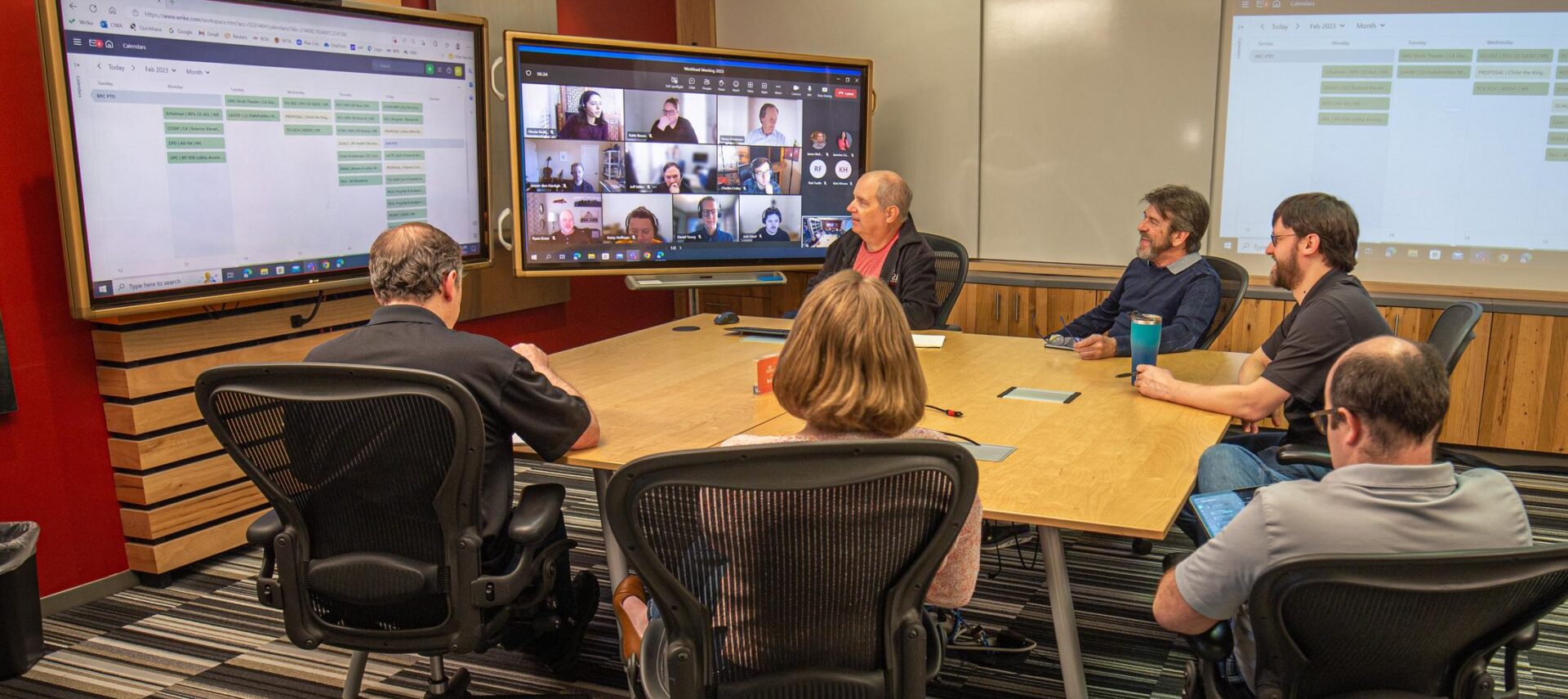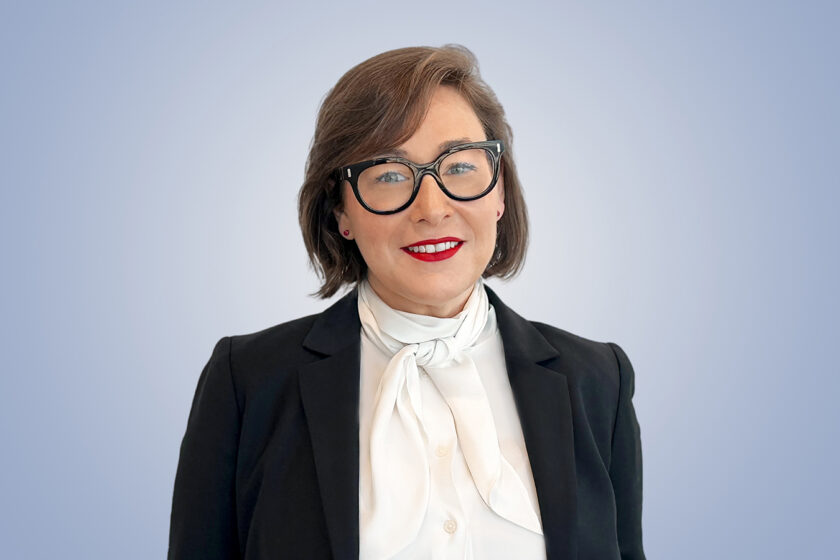News & Insights
Strategic advantage of cross-disciplinary collaboration in engineering and design
This article explores how merging different areas of expertise in the AEC industry is streamlining projects and delivering substantial value to clients facing complex problems.

Building design—a field traditionally marked by distinct roles and independent workflows—is undergoing a transformative shift. The complexity of building projects is escalating, timelines are shortening, and every decision is connected to everything else. This is a challenge the built environment has always faced, now at an even greater scale.
This article delves into the strategic advantage of cross-disciplinary collaboration as a solution to complexity in engineering and a power tool for complex problem-solving, enabling the AEC industry to build smarter, more efficient, and more responsive environments.
What is cross-disciplinary collaboration (and why does it matter in engineering and design)?
Cross-disciplinary collaboration in the architecture, engineering, and construction (AEC) industry signifies a transformative approach that brings together diverse expertise and perspectives. Historically, the AEC industry operated in silos, with architects, engineers, and construction professionals working sequentially rather than concurrently. This method primarily relied on the back-and-forth exchange of drawings and documents and was increasingly inadequate as the complexity of projects escalated.
The advent of building information modeling (BIM) marked a shift in response to growing challenges, catalyzed by evolving client demands. Modern buildings are complex systems expected to deliver on multiple fronts: sustainability, advanced technology integration, robust security, universal accessibility, optimal energy efficiency, superior acoustics, and exceptional indoor air quality. The list is ever-expanding, mirroring the dynamic nature of societal and environmental needs.
Cross-disciplinary collaboration has become a strategic differentiator in addressing multifaceted challenges in engineering and design. It’s not just about using a shared platform like BIM; it’s about cultivating an ecosystem where diverse disciplines can interact, challenge, and inspire each other, leading to solutions that are not just viable but visionary.
The dynamics of divergent and convergent thinking in cross-disciplinary collaboration
Cross-disciplinary collaboration is not a destination; it’s a process. It allows space for diverse viewpoints and experiences to converge to tackle complex problems. This approach not only enhances idea generation but also accelerates the verification and refinement of those ideas.
The early stages of the process rely on divergent thinking, especially crucial at the beginning of a building project. Divergent thinking is characterized by its exploratory nature, where the aim is to generate a plethora of ideas and potential solutions. In a cross-disciplinary AEC team, this kind of thinking thrives on the varied backgrounds and perspectives of its members. Each discipline brings its unique lens, leading to a rich mosaic of ideas that can interact and spark further innovation. The result is a broader, more comprehensive range of solutions that might not emerge within a single disciplinary framework.
However, the generation of ideas is just one part of the equation. The transition to convergent thinking moves beyond ideation to evaluate, prioritize, and refine ideas. In cross-disciplinary collaboration, convergent thinking gains depth and rigor from the diverse expertise within the team. Each member views ideas through a different prism, contributing to a more robust evaluation process. This multi-faceted analysis ensures that the ideas chosen for implementation are not just creative but also practical and well-considered, enhancing the likelihood of project success.
The interplay of divergent and convergent thinking in cross-disciplinary teams exemplifies the strength of this collaborative approach. It facilitates a comprehensive ideation and decision-making process, ensuring that every angle is considered and the best possible solutions are brought to the forefront. This dynamic is what makes cross-disciplinary collaboration a powerful tool for tackling the complexities of modern engineering and design challenges.
The speed of trust as a methodology: quantifying collaborative efficiency
Stephen M.R. Covey made the idea of “the speed of trust” popular in his 2008 NY Times bestseller of the same title. Building high-trust, cross-disciplinary teams is a strategic business decision and requires an investment of time. Teams get to know another team member’s capabilities and what they can deliver. Expectations are established through open communication. Cross collaboration helps each teammate understand how a decision they might make might impact other disciplines. Solutions uncovered through this creative process of design reduce transaction costs, accelerate information flow, and improve decision-making. Trusted relationships are catalysts for efficiency.
Teams built on trust have the strategic advantage of open, constructive dialogues that can challenge assumptions and foster innovation. This atmosphere nurtures creativity, essential in the fields of engineering and design where innovation is key. Innovation requires the collision of ideas to inspire a better way and collaboration means giving space for other ideas to exist and improve the first suggestion.
Cultivating trust requires continuous effort, clear communication, and a shared commitment to common goals. In cross-disciplinary teams, where diverse skills and perspectives converge, choosing trust becomes even more crucial to harness the full potential of the collaboration.
How is cross-disciplinary collaboration impactful for sustainability?
Sustainability—one of the most important problems to solve in the built environment—crosses disciplines by nature. The interplay between various elements of sustainability can be compared to solving a Rubik’s cube, where each design decision triggers a series of consequences across other areas.
Take, for instance, the decision to eliminate fossil fuel-burning boilers on a corporate campus. While this move might significantly reduce the carbon footprint, it also raises a host of interconnected considerations: How will this affect water usage? What are the implications for energy sourcing from the local grid? What kind of waste will this transition generate? These questions underscore the necessity for a holistic perspective that encompasses not just environmental impact, but also broader social and governance implications.
The evolving trend toward environmental, social, and governance (ESG) considerations in organizational and facility decisions further highlights the need for cross-disciplinary collaboration. ESG is not just about isolated environmental measures; it’s about integrating these with social responsibility and ethical governance. Organizations have moved on from looking at a project as a point in time to considering the broad implications of the project to the environment and community over a lifecycle of 50 or more years. In this context, architects, engineers, environmental scientists, and social impact analysts must work collaboratively to ensure that sustainability goals are not just met but optimized.
For example, a cross-disciplinary team can navigate the complexities of sustainable materials sourcing, balancing environmental benefits with social and economic factors. They can collaboratively develop energy solutions that are not only efficient but also equitable. By considering the broader impacts on the community and the environment, they can look for net-positive opportunities. By harnessing the diverse expertise and viewpoints of different disciplines, organizations can create built environments that are not just sustainable in the traditional sense but also resilient, socially responsible, and aligned with an organization’s corporate goals.
How is Salas O’Brien leading in the evolution of cross-disciplinary collaboration within the AEC sector?
Salas O’Brien has strategically implemented an organic and merger-driven growth strategy to bring together a variety of disciplines and areas of market expertise to increase collaboration across North America.
More than just equipping teams with the means to connect and share information, Salas O’Brien actively fosters a culture where project managers can seamlessly integrate varied expertise to address complex challenges.
Recent projects illustrate the transformative power of this approach:
Urban agriculture innovation: Salas O’Brien assisted a food grower in establishing operations near major cities, enabling the delivery of fresh produce using 90% less water than traditional methods.
Enhanced worker safety: In collaboration with Carnegie Mellon University’s Robotics Lab, solutions were developed for the US Army Corps of Engineers to increase safety on barges in the Mississippi River. This collaboration extended to a pre-fabrication construction company, automating processes and enhancing safety in chemical manufacturing.
Sustainable cooling solutions: River water has been utilized for cooling in mixed-use and residential towers. These innovative practices are now being applied to data centers and have provided the additional benefit of improving the river water quality.
Campus decarbonization: Extensive experience in helping college campuses transition to geothermal and renewable energy is now being leveraged in other sectors, including industrial, food and beverage, and pharmaceuticals.
ESG impact optimization: When a division of a renowned food manufacturer needed to modify their process line, Salas O’Brien not only provided the technical solution but also quantified the ESG impact, aligning the project with broader corporate sustainability goals and securing funding.
By weaving together diverse expertise and perspectives, Salas O’Brien is not merely enhancing project efficiency and creativity; it is redefining industry standards for sustainability and client satisfaction. This multidisciplinary synergy transcends traditional construction methodologies, addressing the complexities of modern projects with a breadth and depth of knowledge that a single-discipline approach can’t match.
For Salas O’Brien, cross-disciplinary collaboration is more than an innovative strategy: it’s a fundamental shift in responding to the dynamic field of building design and construction. We are charting a course towards a more cohesive, forward-thinking, and sustainable future in the built environment.
For media inquiries on this article, reach out to Stacy Lake.

Paul Barter, PE
Paul Barter is a strategic leader deeply experienced in working with high-performing teams. His expertise in fostering collaborative partnerships has been instrumental in driving innovative solutions and sustained growth for the firm. Paul serves as Director of National Accounts, Architects and Contractors for Salas O’Brien. Contact him at [email protected]

Craig Janssen, LEED AP
Craig Janssen helps leaders navigate audience engagement and technology shifts. A theatre space and technology designer for high-attendance venues, Craig has led thousands of group discovery and design meetings touching well over 10 billion in construction dollars for the spaces where people gather to share experiences. He leads the acoustics, theatre, and technology team for Salas O’Brien and serves as a Managing Principal. Contact him at [email protected]

Marianna Moores, WELL AP, LEED AP, ActiveScore AP
Marianna Moores is a leader in the field of ESG consulting. With her unwavering commitment to sustainability and profitability, she revolutionizes the way businesses approach their operations. By leveraging data-driven insights and scientific methodologies, Marianna empowers clients to harmonize their environmental and social responsibilities with their financial success. Marianna has over 15 years of experience in sustainability consulting, including third party certifications, corporate sustainability planning, and ESG bridge services. Marianna holds a Bachelor of Science in Architecture as well as an MBA from Georgia Institute of Technology with focuses in sustainability, innovation, and inclusive technology. She serves as an Associate Vice President at Salas O’Brien. Contact her at [email protected].